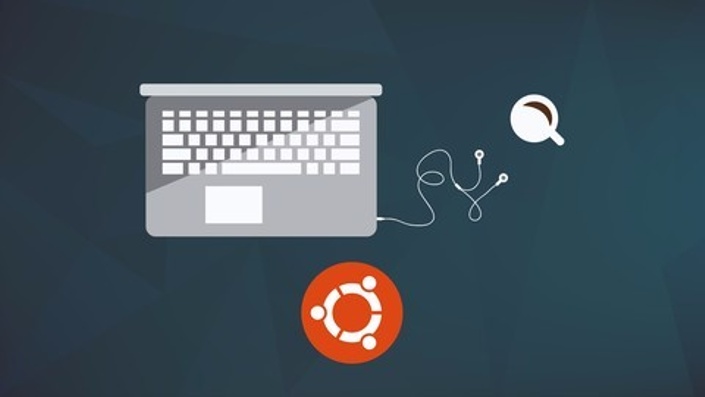This is one of very few. Linux All courses are subtitled in English. As you get to know the course, we’ll be happy to assist you. with Ubuntu
Jerry Banfield with EDUfyre – Ubuntu Linux – Go from Beginner to Power User!

If you would like to Learn Ubuntu LinuxYou can take this course. to Give you motivation and provide 7+ hours of useful tips to use Ubuntu Linux! You can also take this course and have fun! with no experience on Linux Or previous experience using another operating system. to Expand with Knowing Ubuntu. With over 10 years experience in the field, Linux administrator & developer, you can count on Nick to It is simple to explain the important things in a practical and easy-to-understand way. to understand. Watch Nick demonstrate commands to you and you’ll feel at ease trying them. Ubuntu Linux!
This is one among the few Linux All courses are subtitled in English. As you get to know the course, we’ll be happy to assist you. with Ubuntu, Linux Administration, networking, development
Thank you for reading and we look forward to seeing you again. to We look forward to you joining the course!
Your Instructors
Jerry Banfield with EDUfyre
Jerry Banfield with EDUfyre
While in college at the University of South Carolina, 2005 was my first attempt to learn how to do it. to working online. I signed up for an MLM and a survey site. One month later, I received refunds from I believed both, and that it was impossible to work online because everything was a scam. It was because I was afraid to fail again.
2011 was the year I moved to with In an effort to combat video game addiction, my wife launched an internet business that focuses solely on her. to avoid dealing with Any of my other problems. In just a few short months, I had my own business. to I sold shirts to make money from my addiction to video games. One year after I started my business, my University of South Florida criminology PhD program was cancelled. to I ran my business full-time. This had already changed. to Helping clients with Facebook and Google ads based upon my experience failing to Do them for me.
I began sharing my knowledge on YouTube free of charge in 2013 because I wanted to help more people. After 15+ failed business models, I was close to bankruptcy by April 2014. I was also almost dead from You can try to Take the pain away. Fortunately, the fear of dying motivated me. to Recovery is possible. My motivation to get back on track is being in recovery to Focus more on providing true service to It’s more about what it would bring me, and less about how others will benefit. Online courses in education with Udemy was my first business. I partnered with As many skilled instructors as possible and I learned from them from How to be a top instructor to Get my courses to make the most sales
In 2015, I made some videos that shared my recovery journey and received an incredible response from YouTube. I made the videos while playing videogames to make the background more interesting. To create a more useful website, I hired a freelancer to The videos can be converted into blog posts with this about page.
Download immediately Jerry Banfield with EDUfyre – Ubuntu Linux – Go from Beginner to Power User!
Course Curriculum
Getting ed with Ubuntu Linux
Introduction to Ubuntu Linux Being a power-user and getting ed. (7:44)
What are the benefits? Linux distributions? (7:11)
Installing Ubuntu Virtual Machine
Setup your virtual machine by installing VirtualBox. (7:50)
Installing Ubuntu Linux on your virtual machine (6:38).
Installing Ubuntu Linux on your virtual machine (pt.2) at 6:00
Disabling the ISO & first boot up. (2:14)
Optimizing Ubuntu for a Better User Experience & Customizing your Desktop
To improve the user experience, you can install Guest Additions. (7:33)
Customizing our Ubuntu desktop. (8:27)
Install the Unity Tweak tool Ubuntu. (12:06)
Installation Ubuntu Linux Your Primary Operating System should be used in conjunction with it.
Installing Ubuntu Alongside Windows, your hard drive (pt.1) (6.05)
Installing Ubuntu Windows will also be installed on your hard disk (pt.2) (10.16).
Getting ed with The Linux Command Line
How to get ed with The Linux Command line (pt.1) (5.32)
How to get ed with The Linux Command line (pt.2) (7.35)
Administrative privileges Linux terminal. (5:57)
The package manager to Install new applications. (4:02)
You can search through the repository to Look for new applications to download. (2:05)
What if we really want? to What if you want to install a package which isn’t in the repository? It’s no problem! (4:46)
Keep your programs current Ubuntu Linux. (4:39)
File permissions and ownership explained (4:26).
File permissions and ownership explained (pt.2) (8.10)
How to Create a new file in Terminal and then recap. (4:58)
Create new directories and move files. (4:34)
File copying, renaming and removal. (4:44)
Continue reading to More Advanced Commands in Terminal
Getting ed with The FIND command and its practical uses (pt. 1) (3:30).
Getting ed with The FIND command and its practical uses (pt.2) (4.32)
Getting ed with The FIND command (pt.3) and its practical applications (3:24).
Introduction to The GREP command. (2:59)
Using GREP in conjunction with The FIND command. (3:15)
How to You can redirect the output from a command. (3:16)
Use the TOP command to View applications on your Linux machine in real-time. (1:18)
How to View the complete list of closing applications and processes. (5:35)
What is a service? (2:07)
Configuring services with the command-line (4:35)
CRONTABS to schedule tasks. (2:58)
What are the practical uses of CRONTABS (2:37)
Ubuntu Linux Developer Tools: Apply to be a freelancer today!
Selecting an integrated development ecosystem (IDE). (3:33)
Eclipse installation and configuration-up. (3:57)
PyCharm Installation & Set-up. (4:34)
PyCharm installation issue solved. (1:49)
Introduction to GitHub, installation, how to Set-You can set up a repository. (4:15)
How to Pull/push information from Our repository. (6:07)
How to remove/ignore directories in our repository. (5:12)
How to resolve merge conflicts from The command line. (7:17)
How to Set-manage and raise branches. (7:12)
Correction from The lecture that preceded it. (0:42)
Getting ed with Meteor. How to install Meteor to Add packages. (5:54)
Meteor Tutorial pt. 1: Setting up your initial project. (5:34)
Meteor tutorial pt. 2: Configuring our router and React components. (5:54)
Meteor Tutorial pt. 3: Watch our project begin to Take shape! (6:30)
Meteor tutorial pt. 4: Working on the actual programming. (13:14)
Meteor Tutorial pt. 5: Rendering our posts. (8:51)
Meteor tutorial, pt. 6: Putting the final touches on our project. (6:28)
Apache 2, PHP 5, MySQL installation. (3:29)
How to get ed with Configure our server. (5:38)
Hosting our own Web Server & Deploying our Meteor App
What is the host file on a Linux system? (3:25)
Our Meteor app can be deployed to An Apache 2 server. (5:23)
MongoDB NoSQL database setup. (5:17)
Our virtual host is being created. (3:35)
Shell scripts are used to set our environment variables. (7:49)
Installing & configuring phpMyAdmin. (3:14)
Let’s take a look around the phpMyAdmin Panel. (4:48)
This is how to create a basic virtual hosting. (8:10)
Setup a WordPress installation over our Apache 2 environment. (7:24)
Before we can use WordPress, there are some things we should do. to Set-up our database. (6:22)
Python installation & command line interface. (4:29)
What are the practical application of Python? (6:17)
How to manage users, permissions, and groups
User addition/removal through the system settings GUI (GUI) (3.34)
Terminal allows you to add new users. (4:03)
How to Terminal can be used to delete users. (0:57)
How to Change passwords of existing users. (0:45)
Add users to Why it is valuable to form a group. (3:55)
Linux Network Administration Tools
Introduction to networking. (1:38)
How does the internet work (5:11)
What is a Local Network? (7:26)
Practical networking commands (pt.1) (5.32)
Practical networking commands (pt.2) (4.59)
Use netstat to Get detailed statistics about your network. (4:59)
An in-In depth view of the Linux Hosts file (pt.1) (4.31)
An in-In depth view of the Linux Files of hosts (pt.2) (4.48)
Traceroute to Track the servers through which a request is sent. (3:57)
Use Network Mapper to Monitor the activity of your network (pt.1) (7.36)
Use Network Mapper to Track the activity in your network (pt.2) (6.56).
Set up a SSH host on our local and course wrap-Up
Use ssh to Access the command line for a remote host. (2:37)
Let’s use SFTP to Transfer files to from machines. (3:36)
Installing an ssh server on our local machine. (5:27)
Use the man command to Find out more information about the programs offered by your Linux machine. (3:40)
Most Frequently Asked Questions
What is the final point of the course?
It is a course that never ends. It is completely self-explanatory.-Online course that can be paced at your own pace – you choose when you start and when you end.
How long can I have access? to What is the course?
How does lifetime access sound to you? You have unlimited access after you enroll. to You can continue this course as long as it takes – regardless of what device you use.
What happens if I’m not happy? with What is the course?
We wouldn’t wish you to leave. to Be unhappy You will never be satisfied. with We will refund your entire purchase if you contact us within the first 30 days.
Learn more https://archive.is/libRd
Course Features
- Lecture 0
- Quiz 0
- Duration 50 hours
- Skill level All levels
- Language English
- Students 283
- Assessments Yes







